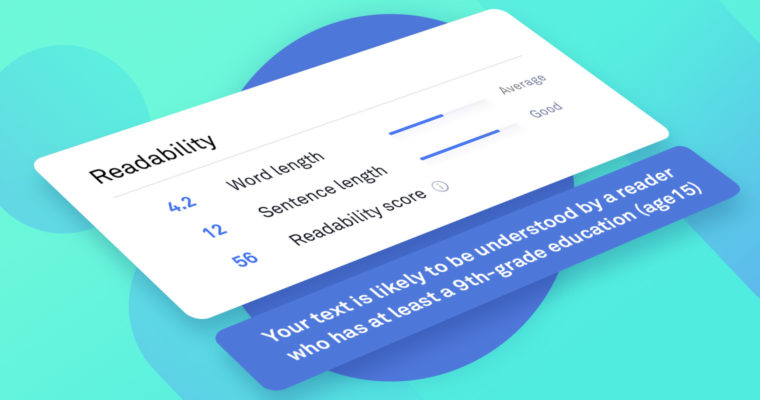
Does this sound familiar?
You’re in the middle of reading something—maybe an article or a particularly long email. Suddenly, you realize that you’ve been reading the same sentence over and over. You know what all the words mean, but you just can’t seem to absorb it. What gives?
Readers might get trapped in a particular sentence for any number of reasons, but often the problem is that the sentence is just too long and complicated. In other words, it’s not very readable. This type of problem can be tricky to detect. After all, a sentence can be grammatically correct but still hard to absorb. That’s where readability scores come in.
What’s readability?
Readability is a quality of your writing. If the readability of your text is high, people will be able to understand your sentences easily. If the readability is low, people still might understand what you’re saying, but it’s likely to be a draining experience. Instead of focusing on the substance of your writing, they’ll need to spend a significant amount of energy unpacking overly complex vocabulary and sentence structure.
To be clear, big words and complex sentences aren’t bad. But using too many of them demands much more concentration from your reader.
What’s a readability score?
Great question! A readability score is a number that tells you how easy it will be for someone to read a particular piece of text. Grammarly’s readability score is based on the average length of sentences and words in your document, using a formula known as the Flesch reading-ease test.
Next time you’re working on a document in the Grammarly Editor, open up the writing assistant and click Performance. Under the Readability section, you’ll see a numerical score. The higher the number, the easier it is to read your document. In most cases, you should aim for a score of 60 or higher. With a score of 60, your document will be easy to read for most people with at least an eighth-grade education. (That’s an average 13-year-old, in case you’re unfamiliar with U.S. grade levels.)
How to improve your readability score
The best way to raise your readability score is to cut down lengthy sentences and replace complex words with simpler ones. Fortunately, Grammarly offers a variety of suggestions to help you write concisely and find the exact word you need in any situation.
More from Grammarly Spotlight:
How To Preserve Formatting in the Grammarly Editor
How To Add New Words to Your Personal Dictionary
How To Learn New Words While Writing
How Do Grammarly’s Products Work?
Why Concise Writing Gets More Readers
Why Hedging Language Undermines Your Writing
How to Select Your English Dialect
Splitting Paragraphs for Easier Reading
How We Use AI to Enhance Your Writing
![]()






